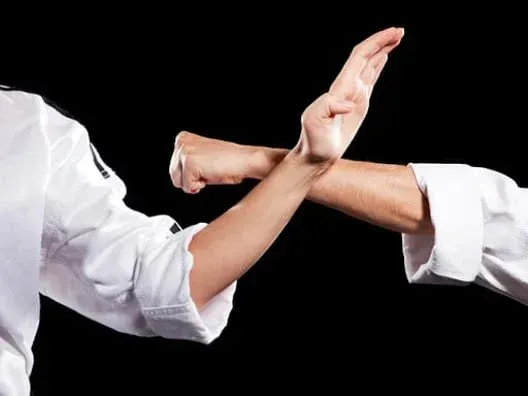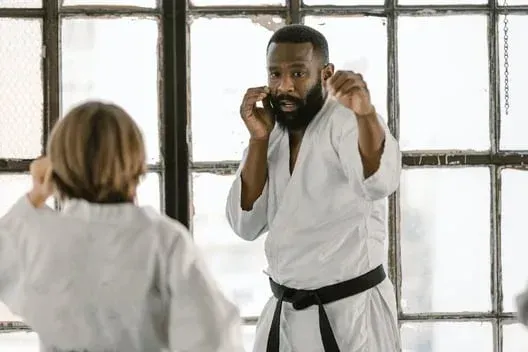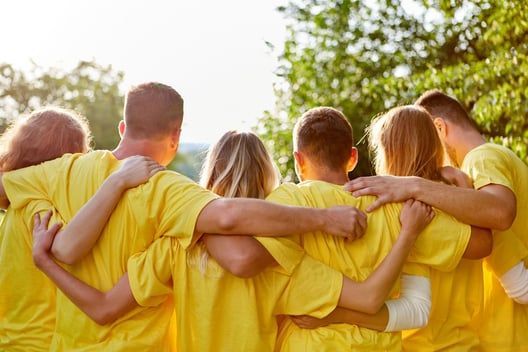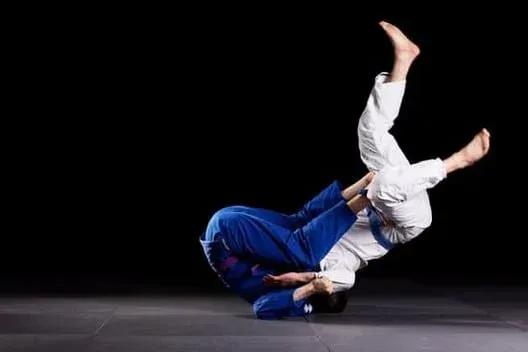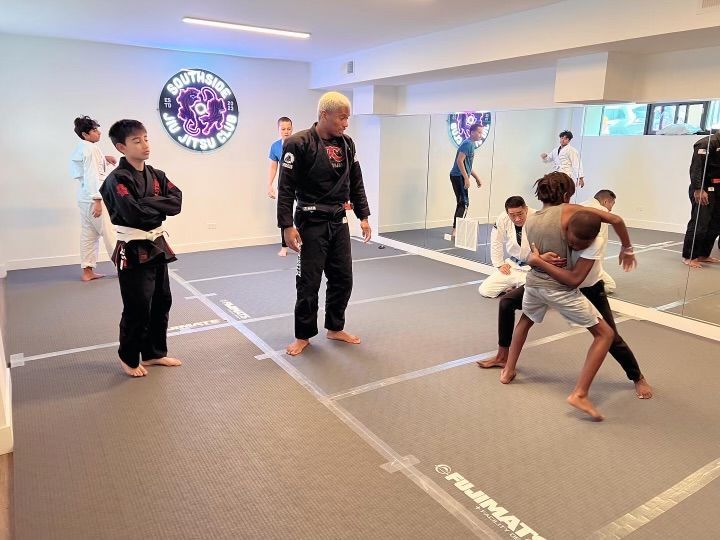The Positive Effects and Benefits of Jiu-Jitsu Training For Kids
More parents are turning to Brazilian Jiu-Jitsu because it offers their kids something that most activities can’t - a real balance of:
- Physical development
- Emotional growth
- Social connection
- Everyday confidence
With so much distraction and pressure in their world, children benefit from an outlet that challenges them while giving them tools to feel capable and grounded.
Brazilian Jiu-Jitsu (BJJ) provides just that. It’s a martial art built around leverage and technique rather than sheer size or strength alone, which helps kids learn how to stay calm under pressure, think clearly, and treat others with respect. At Southside Jiu Jitsu Club, our youth program emphasizes not just skill-building, but personal development inside a community that wants to see every child succeed.

Learn More about Our Youth BJJ Program
What Makes Brazilian Jiu-Jitsu Ideal for Kids?
BJJ stands out among martial arts because it’s safe, technical, and accessible for kids of all body types. Instead of hitting or kicking, children learn controlled movements, grappling positions, and problem-solving strategies.
The result is a training environment where kids build discipline and confidence while staying fully engaged.
Classes are structured and supportive, allowing students to learn at their own pace while still being part of a team.
Every session reinforces key aspects that we ensure shine through in every lesson:
- Respect
- Teamwork
- Consistent effort
Repetition and emphasis of these core principles provides kids with clear expectations and a positive framework for learning.
Core Physical Benefits of Jiu-Jitsu for Kids
Strength, Coordination, and Motor Skills
Jiu-Jitsu naturally builds functional strength because kids use their own body weight and controlled movements throughout training. Instead of purely forcing repetition, the drills help them develop coordination, balance, and body awareness in ways that feel fun and empowering.
Some of the most noticeable improvements include:
- Better balance and stability during movement
- Stronger core and full‑body strength
- Increased awareness of how their body moves and reacts
Over time, they begin moving with more confidence-both on the mats and in everyday life.
Cardiovascular Health and Long-Term Fitness Habits
BJJ keeps kids active from start to finish. Warm-ups, movement drills, and live training help improve their stamina and overall cardiovascular health. Because the activities feel more like games or challenges than traditional exercise, kids stay motivated and build endurance without even realizing how hard they’re working.
The more fun children associate with movement and physical activity, the more likely they are to stay active as they grow. Jiu-Jitsu lays the foundation for a healthy lifestyle by showing kids that physical activity can be enjoyable, social, and personally rewarding.
Mental & Cognitive Benefits Of Kids BJJ
List of Services
-
Discipline, Focus, and Attention ControlList Item 1
Every technique in Jiu-Jitsu requires kids to pay close attention, follow steps, and stay present. This naturally strengthens their ability to focus, listen, and follow instructions-skills that carry directly into school and other structured environments.
-
Problem-Solving and Decision-MakingList Item 2
Training often feels like a puzzle. Kids must adapt, make decisions quickly, and experiment with solutions in real time. They learn how to read situations, choose an option, and adjust when something doesn’t work.
This builds mental toughness and flexibility, teaching them that challenges can be approached creatively rather than feared.
-
Emotional Regulation and ResilienceList Item 3
Jiu-Jitsu is one of the few activities where kids learn how to stay calm in stressful situations while being fully supported. They practice recovering from mistakes, adjusting on the fly, trying again, and building confidence through repetition. These experiences help them develop patience, emotional control, and a stronger sense of resilience.
Kids' Social & Character Development From BJJ
As children progress in Jiu-Jitsu, they experience a natural boost in confidence. They begin to recognize what they’re capable of - whether it’s learning a new technique, completing a drill, or staying composed during a tough moment. This earned confidence helps them feel more secure in themselves on and off the mats.
BJJ is built on etiquette and mutual respect. Kids learn to greet their partners, listen to their coaches, and train safely with others. This creates a culture of humility and accountability where they understand the importance of treating people well and taking responsibility for their actions.
Jiu-Jitsu naturally builds bonds between students through teamwork. Partner training, shared challenges, and group progress help kids form friendships and feel part of a community. At Southside Jiu Jitsu Club, this sense of belonging is a cornerstone of our culture.
Self-Defense Skills & Personal Safety
BJJ teaches kids how to control situations without striking, making it one of the safest and most practical forms of self-defense. They learn how to escape holds, maintain control, and protect themselves using leverage rather than force.
Key skills include:
- How to create distance and break grips
- Basic positional control without harming others
- Age‑appropriate escape techniques from common holds
The confidence this brings is often just as important as the physical skills themselves.
Kids also learn how to recognize potentially unsafe situations and trust their instincts. Instructors reinforce concepts like personal space, verbal boundaries, and how to confidently walk away or seek help when necessary. This helps kids understand their limits, as well as communicate their boundaries and needs more clearly in everyday life, build healthier relationships inside and outside of the gym.
Emotional & Behavioral Benefits of BJJ for Kids
Training gives kids a healthy outlet for energy, emotions, and stress. The physical movement helps them release tension while the structure of class provides consistency and stability. Many parents notice improvements in mood, behavior, and overall emotional balance as their children learn how to regulate themselves. They start to recognize when they feel overwhelmed and develop healthier ways to process those feelings, which carries over into school, home, and social situations.
Children also quickly discover that progress in Jiu-Jitsu requires patience and persistence. Mistakes and setbacks are built into the learning process, and they learn that effort matters more than perfection. Over time, they develop a deeper sense of grit - the internal drive to keep going even when things get challenging. This combination of emotional regulation and perseverance helps them navigate everyday frustrations with more stability and confidence.
How Jiu-Jitsu Supports Kids at Different Stages
List of Services
-
Early Childhood (4–7)List Item 1
For younger children, BJJ focuses on building foundational movement skills, listening abilities, and basic coordination. Classes blend structure with play, helping kids stay engaged while learning how to follow directions and work with others.
-
Youth (8–12)List Item 2
At this stage, kids are ready to learn more complex techniques and deeper concepts of discipline and focus. They begin developing physical strength, emotional maturity, and self-confidence through consistent practice and problem-solving.
-
Teens (13–15)List Item 3
Teen students use Jiu-Jitsu to build independence, leadership, and emotional resilience. As their bodies and identities develop, training gives them a grounded, supportive environment where they can grow stronger-physically and mentally.
Why Families Choose Southside Jiu Jitsu Club
Families choose SJJC because the culture is built on respect, humility, and genuine encouragement. Kids train without pressure or judgment, and they learn quickly that effort matters more than perfection. Coaches and students support one another, creating an environment where progress is celebrated and every child feels safe to try, learn, and grow. Safety and personal development guide everything we do, and that consistency helps kids feel grounded and confident in every class.
Our instructors understand both child development and the art of Jiu-Jitsu, which means they know how to communicate clearly, break techniques down simply, and teach with patience. They reinforce discipline, focus, and resilience in ways that feel encouraging rather than demanding. Kids leave class feeling proud of themselves, connected to their progress, and excited to come back.
SJJC is also a place where kids and families build real relationships. Through youth events, challenges, and community gatherings, students form friendships that extend beyond the mats. Parents appreciate being part of a supportive, tight-knit community that values growth, character, and connection just as much as athletic development.
What to Expect in a Kids Class at SJJC
Our Youth program follows a clear structure: a warm-up, technical instruction, partner-based drilling, and supervised sparring appropriate for the child’s age and comfort level. Instructors tailor the pace to match each student’s needs, ensuring they feel safe, included, and encouraged from start to finish.
How Parents Can Support Their Child’s BJJ Training
Parents play an important role in helping their children succeed. You don’t need to know Jiu-Jitsu to make a difference-simple, consistent support goes a long way.
A few helpful ways to reinforce their progress:
- Keep a consistent training schedule so habits stick
- Praise effort, patience, and attitude more than winning or performance
- Stay in communication with coaches about goals or challenges
- Encourage them when training feels tough or they experience setbacks
When parents and coaches work together, kids thrive.
Previous Blogs
